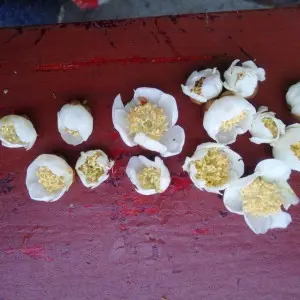Nov . 25, 2024 20:27 Back to list
pollination of pear trees to improve quality
Enhancing Fruit Quality Through Effective Pollination of Pear Trees
The cultivation of pear trees (Pyrus spp.) is a significant agricultural practice worldwide, known not only for the delicious fruits they produce but also for their contribution to the economy and biodiversity. However, one of the key factors that determine the quality and yield of pear fruits is the process of pollination. Understanding and optimizing the pollination of pear trees can lead to improved fruit quality, increased yield, and enhanced market value.
The Importance of Pollination
Pollination is the transfer of pollen from the male anther of a flower to the female stigma. In pear trees, pollination is essential for fruit set, seed development, and the overall health of the fruit. While some pear varieties are self-pollinating, many are not and require cross-pollination to achieve optimal fruit quality. Cross-pollination occurs when pollen from one variety fertilizes the ovules of another. This genetic exchange not only promotes diversity but also enhances the size, texture, and flavor of the pears produced.
Types of Pollinators
Pollinators play a vital role in the success of pollination among pear trees. The most common pollinators include bees, butterflies, and other insects, with honeybees being the most notable due to their efficiency and effectiveness. These pollinators are attracted to the flowers' scent and nectar, and they facilitate the transfer of pollen as they forage for food. In addition to insects, wind plays a minor role in the pollination of some pear species. However, relying solely on wind can be unpredictable, making it crucial to promote and protect insect pollinators in orchard management practices.
Strategies to Enhance Pollination
To improve the pollination and thereby the quality of pear fruits, growers can adopt several strategies
pollination of pear trees to improve quality

1. Choosing Compatible Varieties Selecting appropriate pear varieties that flower simultaneously ensures that cross-pollination is effective. For instance, pairing European varieties, such as 'Bartlett,' with Asian varieties, like 'Shinseiki,' can enhance pollen transfer and fruit set.
2. Planting Pollinator-Friendly Plants Planting a variety of flowering plants in and around pear orchards can attract and support pollinators throughout the growing season. This diversity can include wildflowers, herbs, and even flowering shrubs, creating a conducive environment for pollinator activity.
3. Maintaining Healthy Bee Populations Beekeeping practices should be integrated into orchard management. Providing habitats, minimizing pesticide use, and ensuring that bees have access to diverse food sources are essential strategies for maintaining robust bee populations.
4. Timing of Bloom Understanding the bloom timing of both the pear cultivar and its pollinator is critical. Growers can monitor weather conditions and adjust their planting schedules to align flower openings, ensuring that the pollinators are present when the blossoms are ready for fertilization.
5. Utilizing Managed Pollination Services Collaborating with local beekeepers to rent beehives during the blooming period can significantly increase the chances of successful pollination. This approach ensures that a sufficient number of pollinators is available at the right time, enhancing fruit set and quality.
Conclusion
Optimizing the pollination of pear trees is a vital component of successful pear cultivation. By understanding the importance of both self-pollination and cross-pollination, selecting compatible varieties, and employing strategies to enhance pollinator populations, growers can significantly improve the quantity and quality of their harvest. As the agricultural sector becomes increasingly aware of the value of ecosystem services, investing in pollination management is not just beneficial for fruit growers — it is essential for sustainable agriculture and food security. Effective pollination practices, therefore, stand at the forefront of ensuring that our pear trees thrive and continue to provide us with nutritious, high-quality fruits.
-
Artificial Pollination Solutions for All Plant Pollen Types
NewsJul.29,2025
-
Premium Plant Pollen for Pure Pollination & Pollen Block Solutions
NewsJul.29,2025
-
Artificial Pollination Solutions for Efficient Crop Yields
NewsJul.28,2025
-
Premium Cherry Pollen for Pure Pollination & Different Types of Pollen
NewsJul.28,2025
-
Eco-friendly Fruit Paper Bags with Pollen Block Technology
NewsJul.26,2025
-
Premium Kiwi Pollen for Sale – Fresh Male Kiwi Pollen Supplier
NewsJul.25,2025